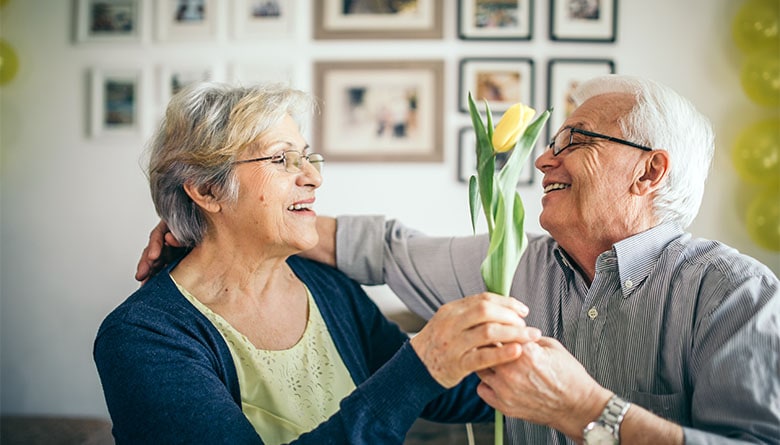Around 70 per cent of people living with dementia live at home, and ideally will continue to live at home for as long as possible. If your loved one is living with dementia at home, it might be worth thinking about small things you could do to make it a more dementia friendly space. With many people spending more time at home at the moment, it is a great time to assess your internal and external living spaces.
Being able to live in your own home is important to different people for different reasons. It brings with it a level of independence that is sadly lacking in many residential care homes. Our homes are usually a familiar and safe environment, and a place to feel comforted and protected from the uncertainty in the world around us.
There are many changes you can make that will help support and retain a person’s skills and abilities, as well as compensate for the effect dementia can have on a person. You will also contribute towards improving their quality of life. Any changes you consider should be made in conjunction with the person living with dementia. It is their home after all. By making too many changes all at one time you could unwittingly unsettle the person even more. Not all changes will work for everyone, so it’s best to try one or two things at a time and see if they help before moving onto the next thing.
Eyesight can deteriorate as we age, and good lighting is important to help see properly. Dementia can affect a person’s eyesight, as well as how a person sees the environment around them. By ensuring your home has adequate natural light and bright light bulbs it will help the person with dementia to navigate their way around. Bright inside lighting may also help eliminate dark spots or shadows, which can be confusing. Replacing light bulbs and having windows cleaned are simple, unobtrusive changes that can be made to most home spaces.
Light also affects sleep patterns, so it is important to ensure during the day there is a lot of natural light coming in to the home, and at night there are curtains or blinds that can be closed to shut out any artificial light from outside.
Another area to look at in the home is flooring. Changes in the colour of the floor from room to room, or from rugs and mats, can look like a hole or an object to step over. Mats and rugs can also cause a person to trip and fall, so try removing them where possible. Lay brightly coloured tape to indicate steps and stairs, and look for cables or others items which may be a trip hazard and move or remove them.
Dementia can affect how a person perceives colour and contrast. By contrasting the colour of furniture, bedding and light switches with walls and floors, it will make these items easier to see. It can also be useful to consider installing contrasting coloured taps and toilet seats, and using plates and cups that contrast with the table or tablecloth. Busy patterns and stripes can cause confusion, so try to minimise these.
Visual cues to help a person remember where things are can be very helpful. Encourage keeping regularly used items in the same place, for example keys, phone, wallet and glasses on the table by the door. Grouping like items together on bench tops may also help a person find and use them. In the bathroom, group items such as toothpaste, toothbrush and hair brush on the bench. In the kitchen group coffee, tea, sugar and cups near the kettle. Consider labelling drawers and cupboards with a picture and description of what is inside. This will help a person with dementia to continue using the kitchen confidently and most importantly, independently.
These are just a few suggestions for changes that can be made around your home. If you want to find out more, visit alzheimerswa.org.au/live-well or call 1300 66 77 88.

 Listen to this page
Listen to this page

